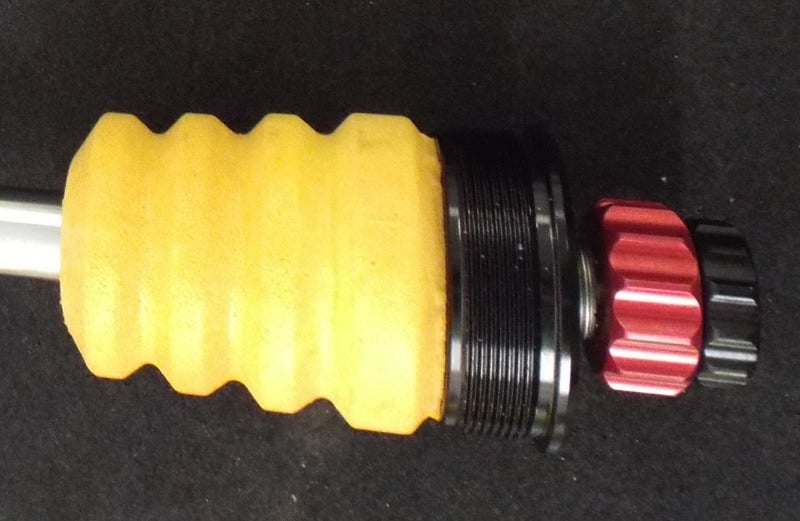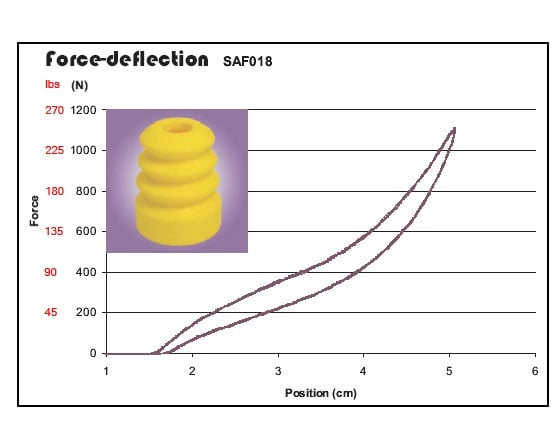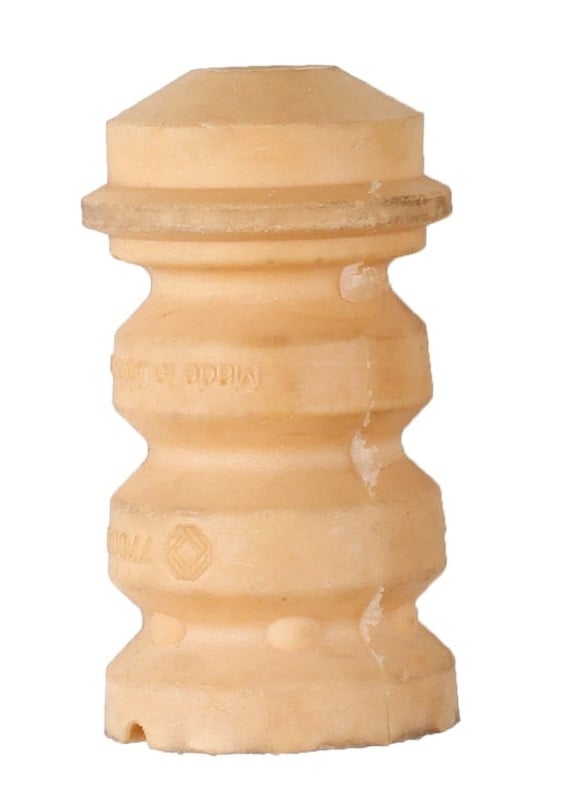Bump Stops - should you cut them when lowering?

Introduction
I've been asked on numerous occasions about whether bump stops should be cut when lowering car suspension..
Traditionally, before the advent of expanded foam polyurethane (PU) bump stops, rubber was used. This tended to result in a rapidly rising rate which could make the vehicle difficult to control in a limit handling situation. I recall once whilst sprinting a standard 205 GTI, coming into contact with the rear rubber bump stop which translated into a sideways moment.
The benefit of PU foam is it can be made in a variety of different shapes and sizes to offer a truly progressive rate in force vs deflection. Although the majority of roll control is gained from the anti-roll bar, using too stiff a bar can cause both traction issues and comfort issues over single wheel bumps (both less of a concern on a smooth circuit). Bump-stops are very useful aids to controlling the on limit behaviour of the car. When the spring rate is overcome and the bump-stop makes contact, the wheel rate will rise.
Engineers will tend to design a road car with relatively low wheel frequencies, lots of preload to hold up the car and then a progressive PU Bump-stop that is integral to the vehicles suspension performance. The PU Bump-stop enables a modern passenger car to combine a comfortable ride with excellent on limit wheel control. The progressive rate of the PU Bump-stop can ensure that roll angles are limited which pays dividends, particularly with MacPherson strut suspension where camber control through compression is a weakness.
Should you cut bump stops down when you fit lowering springs?
This is a discussion, where there is no simple answer. It very much depends on the vehicle in question, the suspension design, the bump stop design and the amount of lowering. For example suppose we have a MacPherson strut suspension with 100 mm of travel in the damper before the bumpstop, which is 70mm long. . This is split with 60% of the travel before bumpstop contact being in compression (60mm) and 40% of the travel being in the rebound stroke (40mm). Let's say the owner decided he wanted to lower 50mm – how does that change the percentage? We still have 100mm of travel but that is now split so that now compression travel is 10% and rebound 90%. This is the exact opposite of what we want. An ideal ratio is 60% compression and 40% rebound. In this instance the Car will be bouncing off the bump stop causing a stiff and jiggly ride, with possibly changed handling balance depending on how the front and rear are working together.
Cutting bumpstop can restore the travel but what happens to the bumpstops ability to absorb overall force ? If we cut the bumpstop down the force deflection curve will change, and the total amount of force will also change.
Let's look at a specific bumpstop to see how this can work...

In the image you can clearly see the progressive rising rate nature of the expanded foam polyurethane material. This bumpstop would work well on a small and light sports car.

This particular bump stop has three convoluted sections, and is also tapered towards the nose. If the bump stop is cut and the number of convoluted sections are reduced, the rate will rise much more quickly, this could cause unwanted handling issues.
Bump stops come in different shapes and sizes depending on the vehicle, particular factors Influencing the design would be the weight of the vehicle, the wheel frequency (the effective suspension stiffness) and the motion ratio of the suspension and also the environment the vehicle will be used in. A race car will tend to have very stiff springs and much shorter travel with smaller stiffer bump stops. A road car will tend to have much longer travel with a longer more progressive bump stop.
Here you can see the short and stiff, but still progressive, bump stop on a race damper.

Contrast that with the longer, softer and even more progressive bump stop on a softly sprung road car.

When a car maker makes a sports version of a car they will tend to use stiffer springs, shorter dampers and shorter stiffer bump stops.
Here's some data from a well known damper manufacturer on two specific cars:
E46 M3
Extended length 481mm
Compressed length 388mm (bump stop contact)
Compressed length 335mm (bump stop compressed @5000N)
In this example within 53mm the bumpstop generates a force of 5000N/ 1124 lbs
Z4M
Extended length 533mm
Compressed length 441mm (bump stop contact)
Compressed length 413mm (bump stop compressed @5000N)
In this example within 28mm the bumpstop generates a force of 5000N / 1124 lbs
In actual fact we found that on the Z4M the ride was improved by using a cut down version of the M3 bumpstop as it was more progressive.
What you can see is just how much force these stops can generate.
So to cut of not to cut?
To sum up what we can say is that lowering a car on standard dampers is much more likely to result in the bump stop coming into play more regularly. We would recommend Eibach lowering springs as they are designed to work With the original bump stop. They keep lowering to a minimal amount to ensure the car isn't spoiled dynamically. Extra low springs are best avoided, unless you can get a shorter damper and different bump stop to work properly with them.
This discussion may well demonstrate why Coilover kits can work well, by using stiffer springs and a shorter damper it possible to ensure that the right ratio between compression travel and rebound travel is maintained.
Depending on the situation there may be an argument for using a different bump stop, or potentially cutting the bump stop, but it's really important to understand what you are doing or it could make things worse.
The bump stop provides critical protection for the damper, If it is cut too short and the ride height is too low, it could lead to an early damper failure. In the event of a warranty claim, damper manufacturers can tell the difference between a defect in production and a damper that has been misused.










